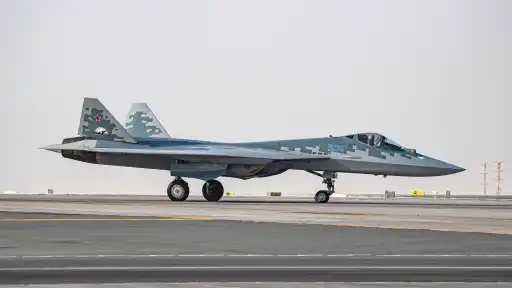Russia is offering India more than just a purchase deal for its Su-57 fifth-generation stealth fighter, it has proposed a full technology transfer, allowing India to build these jets locally.
This offer could be a major boost to the Indian Air Force (IAF), helping it close its critical squadron strength gap while also advancing its long-term goal of defence self-reliance. By manufacturing the Su-57 in India, the IAF could leverage its existing infrastructure and reduce dependency on foreign spare parts.

Technically, the Su-57 brings significant advantages: it offers supermaneuverability thanks to thrust-vectoring engines, sustained supersonic (“supercruise”) capability, and a robust weapons payload. While its stealth may not match all-aspect designs like the F-35, it still features low-observable traits, internal weapons bays, and modern avionics.
Moreover, with the proposed tech transfer, India would gain access to key components like stealth materials, radars, sensors and even engine technology, potentially making future upgrades easier and more cost-effective.
Cost-wise, the Su-57 offer could be more attractive than Western alternatives: it is reportedly cheaper per unit and, with local production, may reduce long-term operating costs.
Still, there are important trade-offs. The Su-57 programme has faced delays, and some experts question its stealth performance and reliability. But for India, the opportunity to domestically produce a fifth-generation jet while gaining deep tech access may well outweigh the risks — especially in an era of shifting geopolitics.
